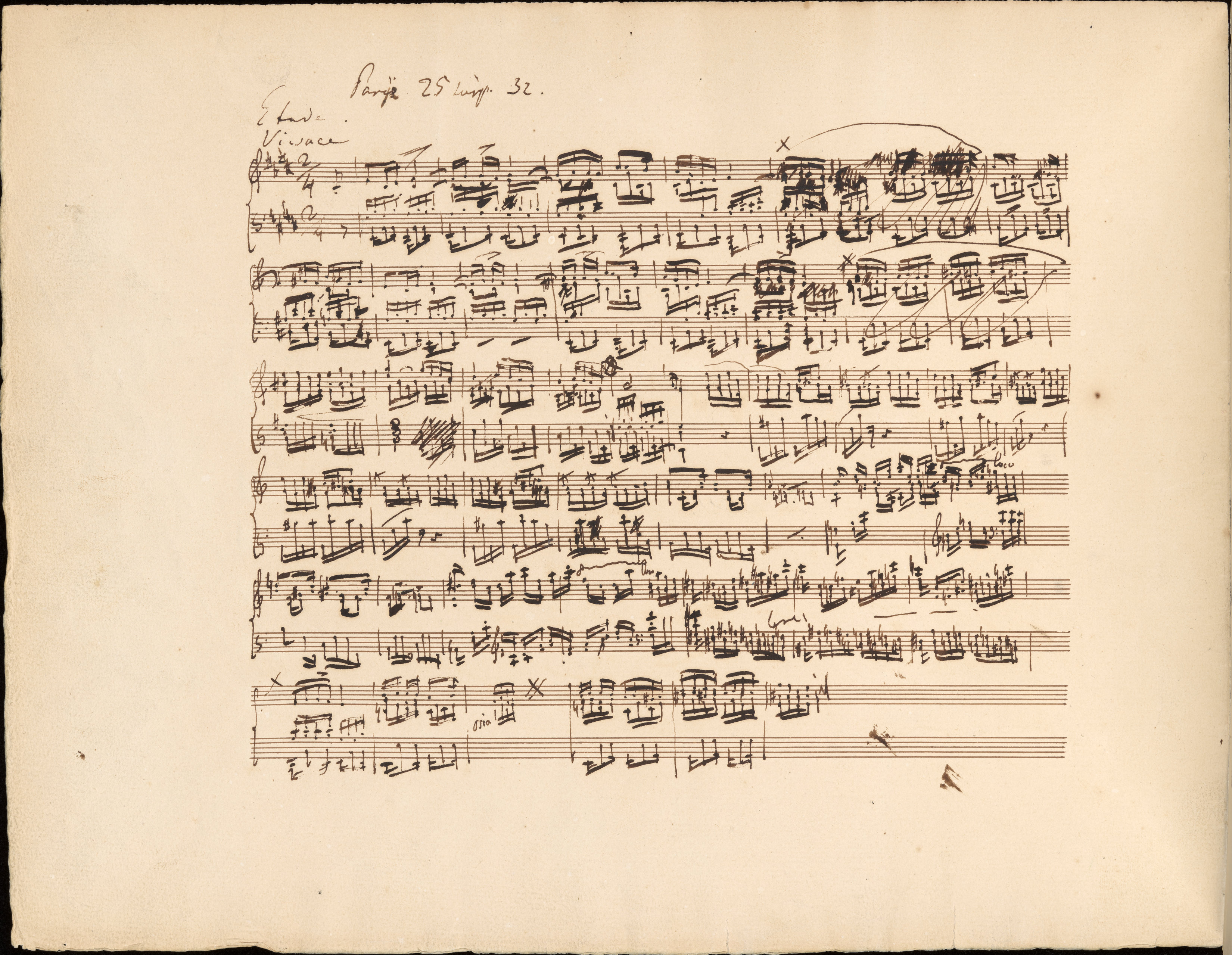



The accents in bars 2 and 10, added by Chopin in a proofreading of FE (→GE,EE), were reproduced in the editions as short. It may be a result of misunderstanding of Chopin entry – normalised long accents were not used in music editions back then, and for a long time after that (cf. the Etude in A minor, No. 2, bars 25-26 and 8 and 12). The problem of choosing the right form of accents is very frequent in this Etude – many accents of A suggest, with their shape or size, the use of a short accent, despite the melodic context typical for long accents. According to us, it can be related to a visible evolution of the character of the extreme parts of the piece, which was most visibly expressed in the change of the tempo indication – in A it was still Vivace non troppo – yet also in the fact of increasing the number of detailed performance indications, including accents. Hence, it cannot be excluded that the shorter, than one could suppose, signs were related to a faster tempo and less exposed lyrical expression of the theme.
Compare the passage in the sources »
category imprint: Interpretations within context; Differences between sources
issues: Long accents, Authentic corrections of FE
notation: Articulation, Accents, Hairpins




